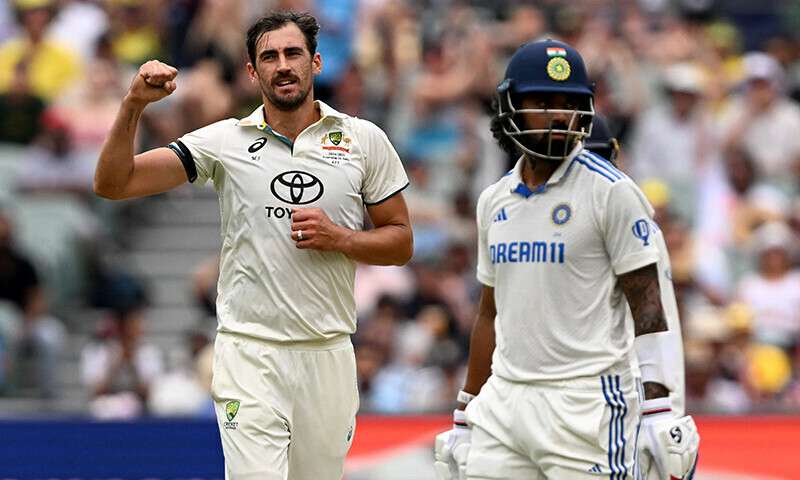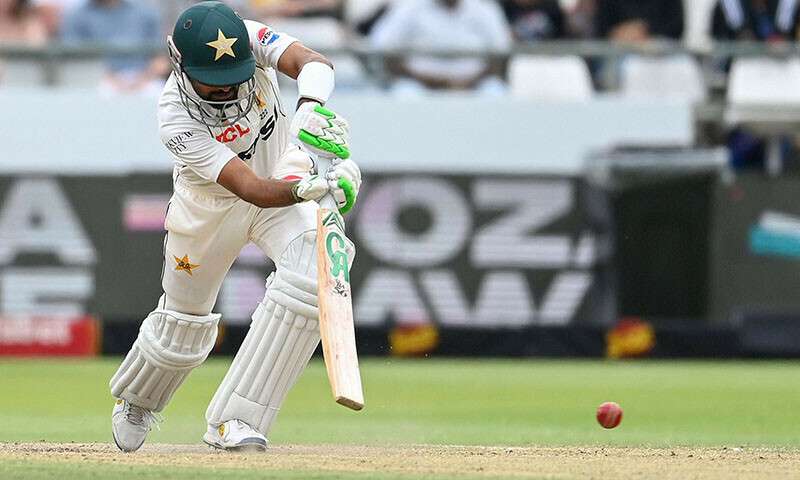Australia took control of the second India-Australia Test match at Adelaide on Friday, thanks to a brilliant performance by Mitchell Starc, who claimed a stunning six wickets, guiding Australia to a commanding position. By the close of the first day’s play, Australia had reached 86 for 1, with Nathan McSweeney and Marnus Labuschagne at the crease after India were dismissed for just 180 runs.
Starc’s Masterclass Leads Australia to Victory
In a day dominated by fast bowling, Mitchell Starc emerged as the star for Australia, taking a career-best 6 for 48 in his 18 overs. His devastating spell saw India crumble to 180 all out, a dramatic collapse that left Australia in a dominant position.
India’s Early Collapse
The match started with fireworks as Starc struck on the very first ball of the game, removing Yashasvi Jaiswal for a duck. This sensational start for Australia set the tone for the rest of the innings. Starc, with his hostile pace and movement, continued to wreak havoc, dismissing several key Indian batsmen, including the likes of Virat Kohli, Shubman Gill, and KL Rahul.
Kohli, fresh from his century in the first Test, was dismissed for a mere seven runs, caught by Steve Smith off Starc’s bowling. Rahul, who had already survived a scare, was finally removed by Starc for 37. His innings had been a struggle, with several opportunities to get out, but he fought hard before falling to a brilliant delivery from Starc.
Boland and Cummins Take Control
Scott Boland and Pat Cummins played pivotal roles in the destruction of the Indian batting line-up. Boland, in for the injured Josh Hazlewood, took the crucial wickets of KL Rahul and Shubman Gill. Cummins, ever the reliable captain, chipped in with the wickets of Rohit Sharma and Rishabh Pant, who was dismissed by a vicious rising delivery.
The tail-end of India’s batting, featuring Ravichandran Ashwin and Harshit Rana, didn’t last long either, as they fell quickly to Starc and Cummins.
Australia’s Response: A Solid Start in Reply
In response, Australia had to face the tricky pink-ball conditions under the floodlights, but they handled it with composure. Usman Khawaja, Australia’s opener, fell for 13 when Jasprit Bumrah found movement, taking a thick edge that was caught by Rohit Sharma in the slip. However, McSweeney and Labuschagne made sure Australia didn’t lose any more wickets before stumps.
McSweeney’s Patient Knock
McSweeney, playing only his second Test match, showed great maturity. He took 17 balls to get off the mark but once settled, looked comfortable, even surviving a tough chance early on when Rishabh Pant dropped him. McSweeney ended the day unbeaten on 38 from 97 balls, showing promise for a long innings.
Labuschagne, who had been struggling for form, looked more settled in his innings and will be looking to build on his 20 runs when play resumes on Day 2.
India’s Struggle: A Tale of Missed Opportunities
India came into this Test match with high spirits, having won the first Test in Perth by 295 runs. However, their plans quickly unraveled, starting with the first ball of the match. Starc’s early breakthrough against Jaiswal was a huge blow, and from there, India never truly recovered.
Their opening pair, Jaiswal and Rahul, both struggled under pressure, with Jaiswal’s dismissal coming with the first ball of the match and Rahul later falling after multiple close calls. Gill, although playing a few delightful strokes, couldn’t make a lasting impact and fell just before the tea break for 31.
India’s middle order, led by Kohli and Ashwin, never found any rhythm, and it was left to lower-order batsman Nitish Kumar Reddy, who fought valiantly with a quick-fire 42 runs, to provide some resistance. Reddy hit two big sixes off Boland before both he and Bumrah were dismissed, bringing India’s innings to a close.
Australia’s Record in Adelaide: A Fortress for the Hosts
Australia has a remarkable record at the Adelaide Oval, having won all seven pink-ball Tests they have played here. The day-night conditions in Adelaide often favour the fast bowlers, and Australia’s seam attack, led by Starc and Cummins, exploited this perfectly. Australia’s bowlers, especially Starc, have proven to be a handful in these conditions, making it difficult for India to build any momentum.
Looking Ahead: What’s Next for Both Teams?
With Australia in a commanding position, the focus now shifts to whether India can bounce back in the second innings. With the pitch expected to offer some more assistance for the fast bowlers, it will be up to India’s top order to show resilience and fight back. For Australia, the aim will be to build a sizable lead and apply more pressure in the second innings, where they will hope for a repeat of their devastating bowling performance.
FAQs
1. How did Mitchell Starc perform in the second Test?
Mitchell Starc claimed 6 wickets for 48 runs, which were his best Test figures. His performance played a key role in dismissing India for just 180 runs.
2. What was the key moment in Australia’s bowling performance?
Starc’s opening delivery to remove Yashasvi Jaiswal with the first ball of the match set the tone for Australia’s dominant performance with the ball.
3. How did the Australian openers perform in reply?
Australia’s openers, Usman Khawaja and Nathan McSweeney, started cautiously. Khawaja was dismissed for 13, but McSweeney finished the day unbeaten on 38, with Labuschagne on 20.
4. What went wrong for India during their innings?
India’s top order failed to get going. Starc’s early wickets, combined with tight bowling from Boland and Cummins, saw India’s batsmen struggle, with only Nitish Kumar Reddy showing resistance.
5. How does Australia’s record at Adelaide impact this Test match?
Australia has a perfect record in day-night Tests at Adelaide, winning all seven matches. The conditions favour fast bowlers, and Australia has capitalized on this advantage in previous matches.
MUST READ:
https://flarenews.pk/2024/12/06/pakistan-reaffirms-commitment-to-imf-amid-missed-targets/



